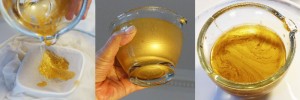Time-travelling Mughal Architecture
The Emperor Shah Jahan, who reigned over the vast Mughal empire in India from 1628 – 1658, was responsible for
some of the most exquisite architecture ever seen. The favorite grandson of Emperor Akbar, and the son of Shah Jahan, he continued his family’s tradition of magnificent and innovative patronage of the arts. Shah Jahan’s vision in Imperial building created some of the most enduring and influential models of architecture – the breathtakingly beautiful Taj Mahal, for example, has become a national Indian icon.
The aesthetics of Mughal architecture developed out of a fusion of ancient indigenous Indian building styles and the Islamic architecture of Iran and Central Asia; under Shah Jahan’s patronage it crystallized into a near-perfect maturity. The most distinctive features of this style are the pointed and fluted arches and the use of rich and subtle surface decoration. Red sandstone was the traditional building material of Imperial Indian architecture, but Shah Jahan favoured white marble, its surfaces rich with carving and inlaid with designs in semi-precious stones. The surface designs are restrained and delicate, never compromising the overall purity of the structural forms.
The definitive Mughal Arch continued to be replicated as an essential feature of Indian architecture during the eighteenth and nineteenth centuries. It also appeared from time to time in European architecture, particularly during the stylistically eclectic late nineteenth century. I was fascinated to see the use of this arch in the late nineteenth-century architecture of the Museum of Applied Arts in Budapest, Hungary.
The museum was designed in 1891 by Odon Lechner, and the building was completed in 1896. It was very innovative for its time, not just for its stylistic concept – Lechner being a pioneer of the Secessionist/Art Nouveau movement in Hungary – but also in the use of steel as a building material for an institutional edifice. Believe it or not, the Main Hall in the picture above is constructed entirely out of steel, including the arches and the columns that support them, and the entire space is topped with a curved glass roof with a riveted steel structure.
 The fore-hall leading into the main hall shows an extraordinary juxtaposition of stylistic elements, all adapted to the impositions of the steel structure, and also amazingly fluid in form because of the material. There is the distinctively Hungarian Baroque shape of the stairwell openings lined with heavy nineteenth-century moulded steel railings – which are reminiscent of the balustrades of stone that were used extensively on Colonial architecture in India during the same period.
The fore-hall leading into the main hall shows an extraordinary juxtaposition of stylistic elements, all adapted to the impositions of the steel structure, and also amazingly fluid in form because of the material. There is the distinctively Hungarian Baroque shape of the stairwell openings lined with heavy nineteenth-century moulded steel railings – which are reminiscent of the balustrades of stone that were used extensively on Colonial architecture in India during the same period.
This wonderful nineteenth century fantasy architecture, with its state-of-the-art technology and its exotic historical and colonial references, has a particular resonance with Steampunk, a deliciously decadent and fantastical reworking of historical style and technology that has gained popularity in our own era.
Which leads us to the world of movies and glorious production design: Shah Jahan’s arches reincarnated in Captain Nemo’s submarine in the 2003 movie The League of Extraordinary Gentlemen, as designed by Carol Spier.
We are to believe that these interiors are constructed out of steel, it being a fantasy submarine (Of course, as it is a film-set, it is more likely constructed out of wood and dressed to look like a metal interior) I particularly enjoy the design of the main room in the submarine, below, not merely for its unashamed colonial references, but for the conception of those ornate, heavy pillars, as pristine as Shah Jahan’s white marble, and rich with surface design reminiscent both of Mughal carving and Nineteenth Century cast-iron. Spier has excelled herself with Captain Nemo’s props (not featured here – I recommend seeing the film for those visual delights) – I think Shah Jahan would approve.








 "Making Masterpieces for a Prince of the Black Sheep" – my Bodleian Fellowship research blog
"Making Masterpieces for a Prince of the Black Sheep" – my Bodleian Fellowship research blog "The Book of Gold" – Gold pigment tutorial available from my Etsy shop
"The Book of Gold" – Gold pigment tutorial available from my Etsy shop